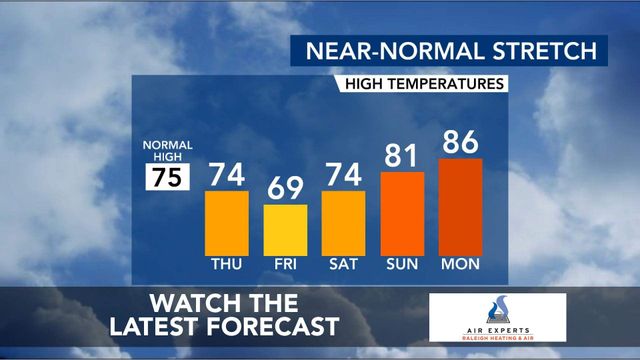Investigators Listen To Witness Accounts, Examine Evidence In Search For Answers After Fatal Crash
Thick clouds of black smoke and scores of frightened people on the ground were virtually all that was left to see when a commuter plane crashed and burned Wednesday, killing all 21 people aboard.
John Goglia of the National Transportation Safety Board said he believed the crash was an accident; there was no evidence of any terrorism or deliberate destruction to the plane.
That may have made news of the crash even harder to believe.
Sgt. David Marshall of the North Carolina Air National Guard was arriving for work Wednesday morning at the guard's headquarters at Charlotte/Douglas International Airport when he saw the doomed US Airways Express plane about 1,000 feet in the air, its nose nearly perpendicular to the ground.
Marshall, who holds a private pilot's license but does not fly for the guard, watched in horror as the plane stalled.
"The nose came down, and it began to level off, and it went into a second stall," he said Thursday as he arrived at the airport to offer his account to investigators.
Flight 5481, a Beech 1900 twin-engine turboprop, rolled to its right and dropped rapidly, clipping a corner of a hangar before it hit the ground.
Dee Addison heard the impact from her airport business about 500 yards away. She ran outside to see panicked people running from a maintenance hangar as smoke billowed just outside.
"It was like a frenzy," Addison said. "At the time we didn't know a plane had actually crashed. It didn't even look like a plane. It was totally demolished."
No one on the ground was injured, though a portion of the hangar - a maintenance facility for US Airways - was scorched and battered. Layers of smoke poured from the wreckage, so thick "you could taste it in your mouth," Addison said.
Said Yvonne Hepler, Addison's co-worker: "It just happened so quickly. It just disintegrated in a matter of seconds."
The plane, carrying 19 passengers and two crew members, took off to the south, then banked toward the airport and fell, airport director Jerry Orr said.
The cause of the crash - the deadliest U.S. air accident in nearly 14 months - was still not clear late Wednesday or early Thursday.
Investigators recovered the flight data recorder and the cockpit voice recorder and sent them to Washington, D.C., for analysis, said Goglia.
"Both were burned, but it does appear they were in decent shape," he said.
The voice recorder contained 34 minutes of tape, and its contents were expected to be available to investigators around mid-day Thursday.
Goglia said the Beech 1900 has been in use since the 1960s as a commuter aircraft, "so we're going to have mishaps.
"But recently, in the last seven or eight years," he said, "it has proven to be a very reliable airplane. So we can't immediately jump to the assumption that there's an airplane problem."
The NTSB brought 26 agents to help investigate. They walked the runway Wednesday and found some bolts and small pieces of debris. But they had not determined whether or not they belonged to the plane, Goglia said.
The pilot, identified by US Airways as Katie Leslie of Charlotte, contacted the tower at takeoff to report an emergency, said Greg Martin, a spokesman for the Federal Aviation Administration.
"However, (the transmission) was cut short, and the emergency was never identified," he said.
The flight originated in Lynchburg, Va., and was bound for the Greenville-Spartanburg airport in Greer, S.C. Officials said none of the passengers started their trip in Charlotte, though some had connected there from other flights.
The plane was a twin-engine Beech 1900 turboprop, US Airways said. A maintenance alert for the type of plane was issued in August saying that attachment bolts for the vertical stabilizer were found loose on one plane during a scheduled inspection.
The FAA has issued nearly two dozen airworthiness directives on the 1900-D since 1994. The directives warn of problems that must be repaired if found in an aircraft.
A directive issued in November and scheduled to be effective in two days warned that screws in the elevator balance weight attachment could come loose and interfere with the horizontal stabilizer.
The plane, built in 1996, was one of about 50 operated by Mesa Air Lines, parent of Air Midwest, said US Airways. The plane had been flown 15,000 hours and performed 21,000 takeoffs and landings.
FAA records showed the aircraft was involved in five in-flight incidents that the NTSB said could affect safe operations. The aircraft also reported 10 lesser service difficulties.
The airline operates in the East and Midwest as US Airways Express, in the West and Midwest as America West Express, in Denver as Frontier JetExpress, in New Mexico as Mesa Airlines and in Kansas City with Midwest Airlines.
The crash came after a year in which there were no deaths aboard a passenger or cargo airliner in the United States. It was the third time in a decade that a year went by without a fatality on a commercial plane, according to the FAA.
The last was the crash of American Airlines Flight 587 in New York on Nov. 12, 2001, in which 265 people died.
The last deadly crash involving a commercial airline in Charlotte was July 2, 1994. USAir Flight 1016, a DC-9, crashed during a heavy thunderstorm on its way from Columbia, S.C., with 57 people aboard. Thirty-seven were killed.









